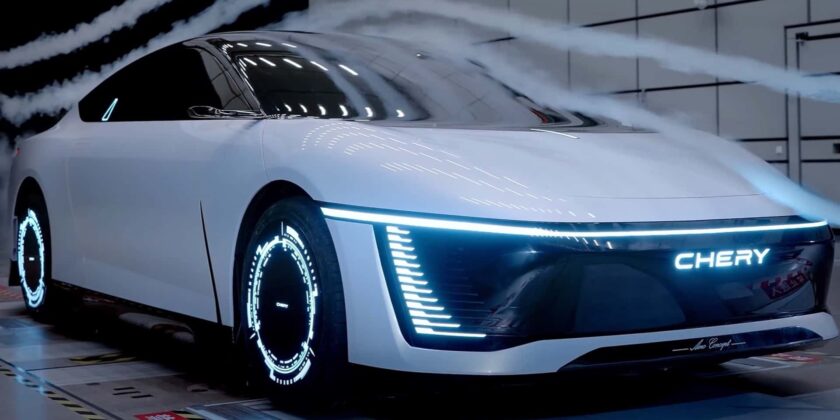Aerodynamics play a pivotal role in the automotive industry, with its importance becoming even more pronounced in the era of electric vehicles. Efficient aerodynamics are crucial for several reasons, and first and foremost, they impact a vehicle’s energy efficiency, which is paramount for EVs. Put simply, streamlined design reduces drag, allowing battery-powered cars to overcome resistance more easily and travel further on a single charge.
This leads us to the machine you see depicted here. It is Chery’s latest electric concept, which apparently has a drag coefficient of 0.168. The Aero prototype has been developed using AI simulations and Chery claims this is the most aerodynamically optimized car in the world. But that’s completely inaccurate, to say the least. We’ll get to that in a second, though.
The available details about the concept aren’t that many. The automaker from China explains it took inspiration from tuna fish for the overall design language and performed more than 2,000 different optimization cases pursuing the perfect aerodynamic lines. During tests in a wind tunnel in August this year, Chery registered a Cd of 0.168, which it claims is the best achievement in the automotive industry. The result hasn’t even been verified independently, though.
If real, this is an impressive number, that’s for sure. However, it is by far not the lowest drag coefficient the automotive industry has seen. Comparing it with other remarkable achievements in the aerodynamic department, the Volkswagen ARVW concept achieved a Cd of 0.15 back in the 1970s. The Ford Probe V concept from 1985, meanwhile, had a wind resistance of 0.137, and the Fiat Turbina from 1954 had 0.14. These are all numbers that easily beat Chery’s new concept.
The Lightyear 0, a much more modern car, had a drag coefficient of 0.175. That startup didn’t last long and only two vehicles were assembled, though. As Electrek recalls, Aptera Motors is putting the finishing touches on a solar electric three-wheeler, which is said to have a drag coefficient of between 0.13 and 0.15. These numbers aren’t official and public yet, though.
For those uninitiated with Chery Automotive, it is a Chinese automobile manufacturer that was established in 1997. Based in Wuhu, Anhui, China, Chery initially gained recognition for producing economical and affordable compact cars designed to meet the needs of the growing Chinese middle-class population.
Over time, Chery has demonstrated a commitment to innovation, with a strong emphasis on research and development. One notable aspect of its global expansion has been its push into the electric vehicle market. The manufacturer’s international footprint has grown steadily, with partnerships and assembly plants in several countries, including Brazil, Russia, and Iran. As of today, Chery also doesn’t have the world’s most aerodynamic car.
Source: Read Full Article
